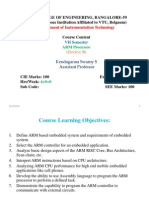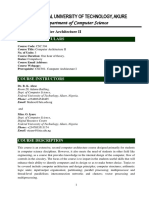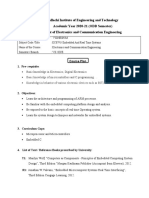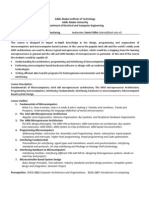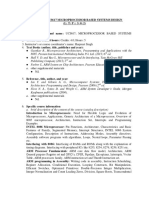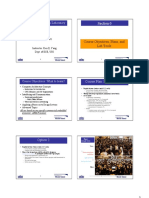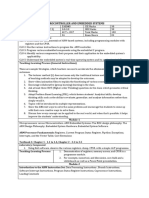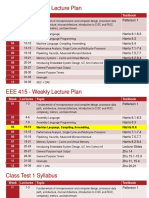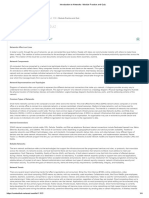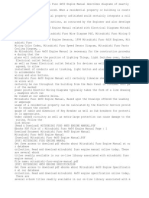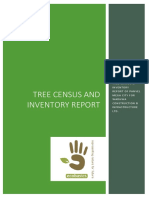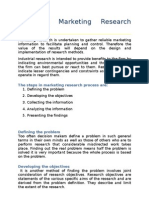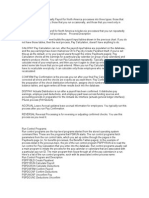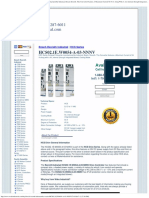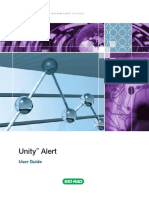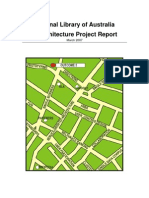0% found this document useful (0 votes)
62 views3 pagesSASTRA CSE205 & CSE206 Syllabus Update
This document outlines modifications to course syllabi for Computer System Design laboratory courses for various Computer Science and Engineering programs. The courses include CSE205 on Computer Architecture and CSE206 on Computer System Design Laboratory.
CSE205 covers ARM architecture, instruction set, and advanced features like instruction level parallelism and vector architecture. CSE206 experiments involve assembly language programming, interfacing peripherals like LEDs, switches and timers on an ARM board, and analyzing cache performance using GEM5. The courses aim to help students understand ARM processors and develop assembly programs to interface with I/O devices.
Uploaded by
Roseywhite LaraCopyright
© © All Rights Reserved
We take content rights seriously. If you suspect this is your content, claim it here.
Available Formats
Download as PDF, TXT or read online on Scribd
0% found this document useful (0 votes)
62 views3 pagesSASTRA CSE205 & CSE206 Syllabus Update
This document outlines modifications to course syllabi for Computer System Design laboratory courses for various Computer Science and Engineering programs. The courses include CSE205 on Computer Architecture and CSE206 on Computer System Design Laboratory.
CSE205 covers ARM architecture, instruction set, and advanced features like instruction level parallelism and vector architecture. CSE206 experiments involve assembly language programming, interfacing peripherals like LEDs, switches and timers on an ARM board, and analyzing cache performance using GEM5. The courses aim to help students understand ARM processors and develop assembly programs to interface with I/O devices.
Uploaded by
Roseywhite LaraCopyright
© © All Rights Reserved
We take content rights seriously. If you suspect this is your content, claim it here.
Available Formats
Download as PDF, TXT or read online on Scribd
/ 3
